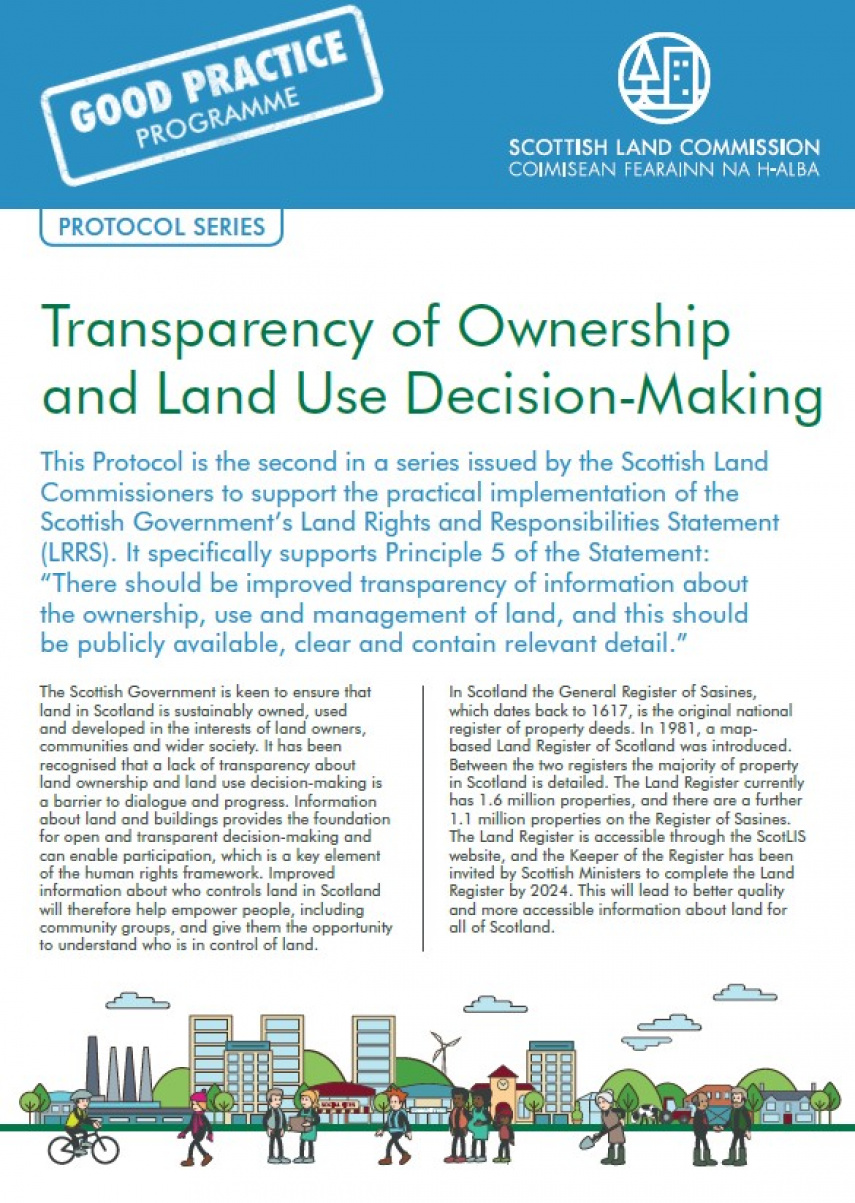News: Clarity about land ownership benefits everyone
Owners and managers are being encouraged to provide simple details that will greatly improve people’s understanding of who owns land in Scotland and what it is used for, under the Scottish Land Commission’s latest protocol.
The protocol on ‘Transparency of Ownership and Land Use Decision-Making’ was published this week and it is the second in the good practice series issued by the Commission to support the practical implementation of the Scottish Government’s land rights and responsibilities statement (LRRS).
The land rights and responsibilities statement is working to create a Scotland with a strong and dynamic relationship between its land and people and where all land contributes to a modern and successful country, but a lack of transparency about land ownership and land use decision-making still remains as a barrier to progress.
This protocol focuses particularly on Principle 5 of the statement: “There should be improved transparency of information about the ownership, use and management of land, and this should be publicly available, clear and contain relevant detail” and supports the upcoming Register of Persons Holding a Controlled Interest in Land.
The protocol asks that:
- Up-to-date information about who owns land or buildings and the extent of the landholding should always be publicly available
- If there are people or bodies with significant influence and control over land and buildings, information about who they are and the extent of their control should be made publicly available along with information about ownership
- Contact information for the landowner or for someone with local decision-making authority over the land (such as a land manager or agent) should be available
- Contact information for the relevant community council and/or community organisations in the area should be available.
Sally Reynolds, Scottish Land Commissioner, said:
“Information about land and buildings provides the foundation for open and transparent decision-making and can enable participation. Improved information about who controls land in Scotland will help to empower people, including community groups, and give them the opportunity to understand who is in control of land.
“In the next few years, landowners and managers will be obliged to contribute to both the Land Register and a new Register of Persons Holding a Controlled Interest in Land. This Protocol is designed to encourage positive behaviour by all interested parties and sets out the reasonable expectations of the information to be provided.
“It seems only right that information about the ownership, use and management of land should be available to those who could be impacted by the decisions made about that land.”
The protocol is most relevant for:
- Owners of land – including individuals, companies, trusts, public bodies, non-governmental organisations, charities and community landowners – but excluding individual home owners
- Land Managers (such as a tenant or agent)
- Any other person with significant influence or control over land
- A Community Council representing the area within which the land and/or a related community sits
- A relevant constituted community organisation, having an openly elected membership, and representing the area within which the land and/or a related community sits.
